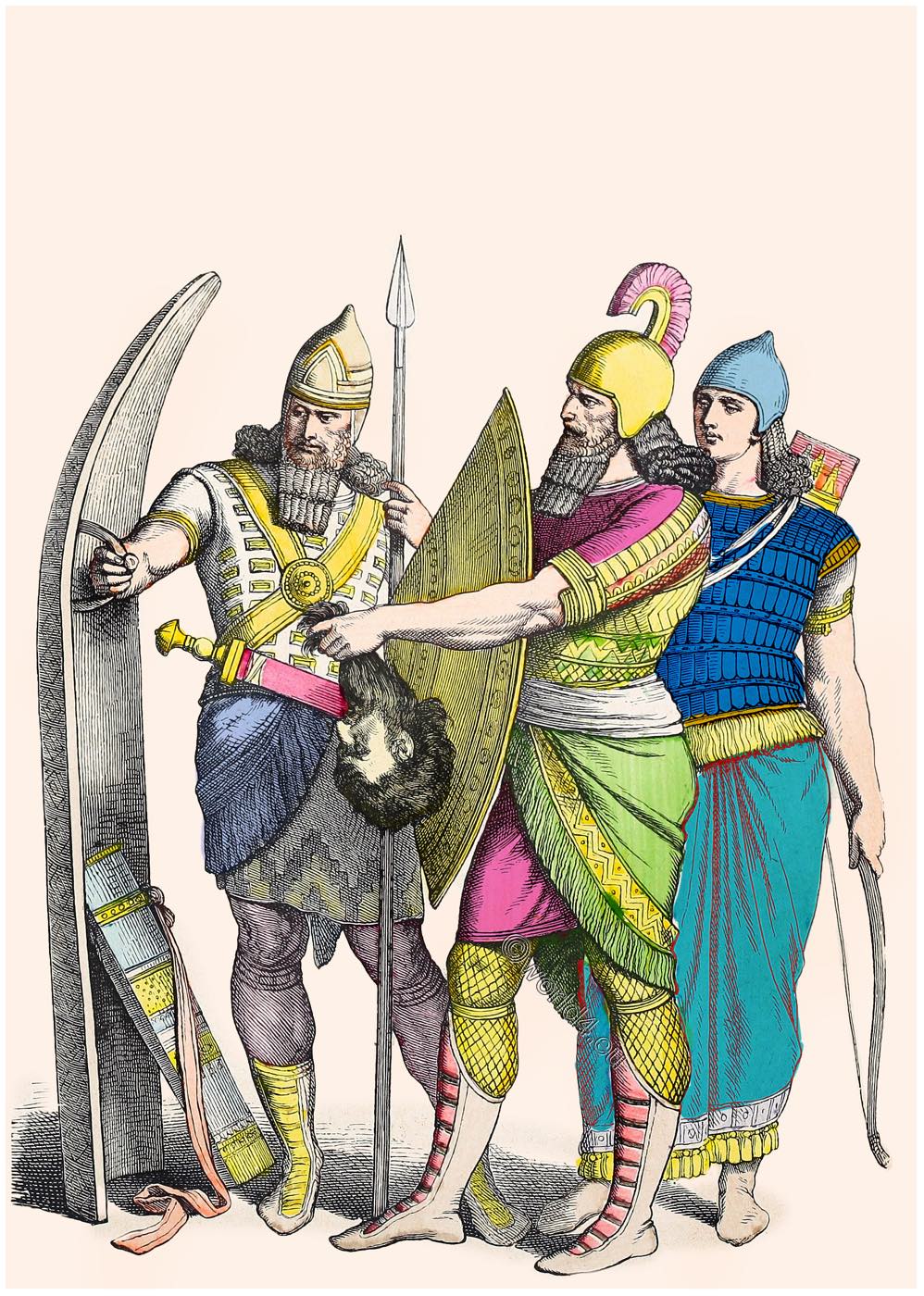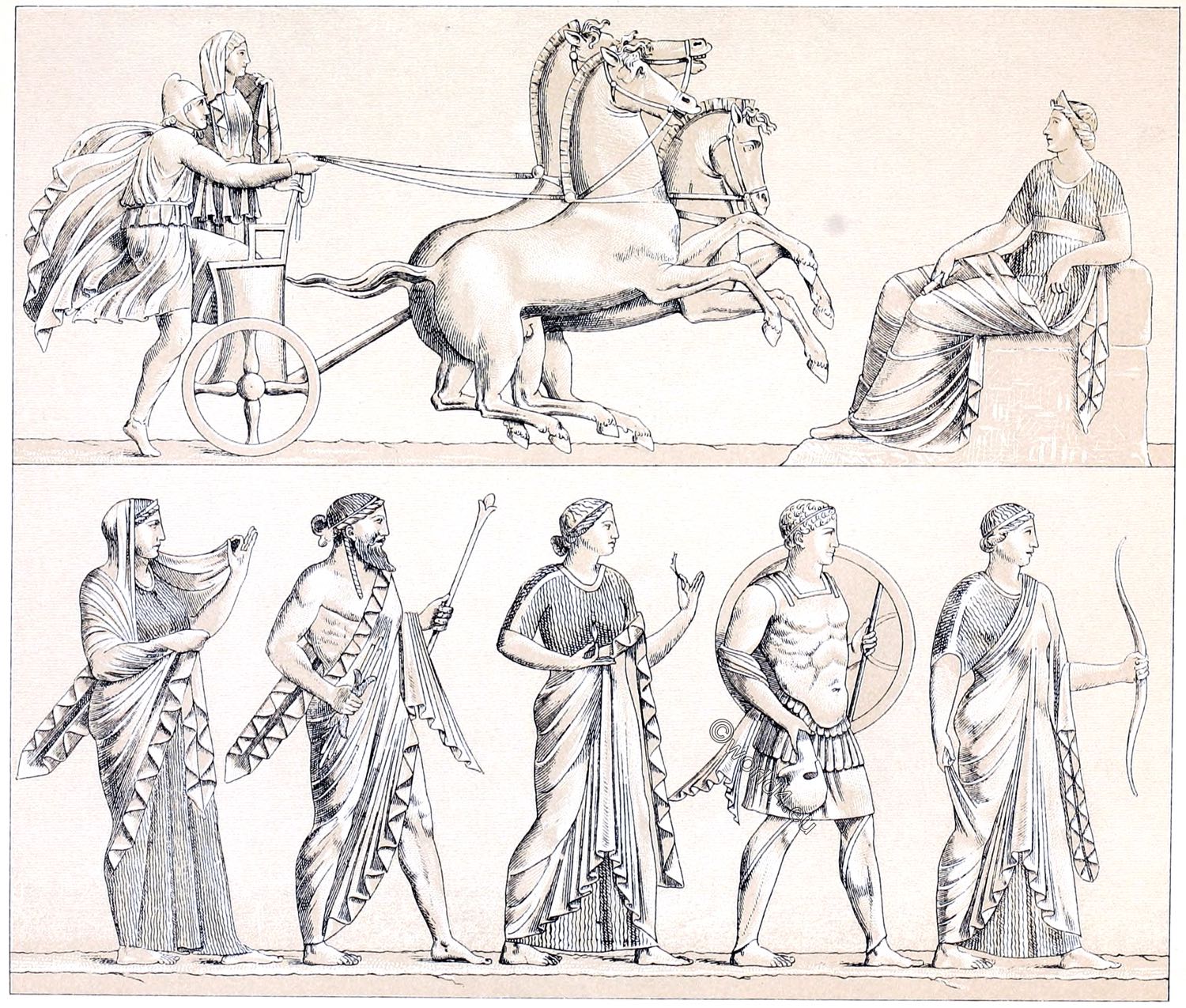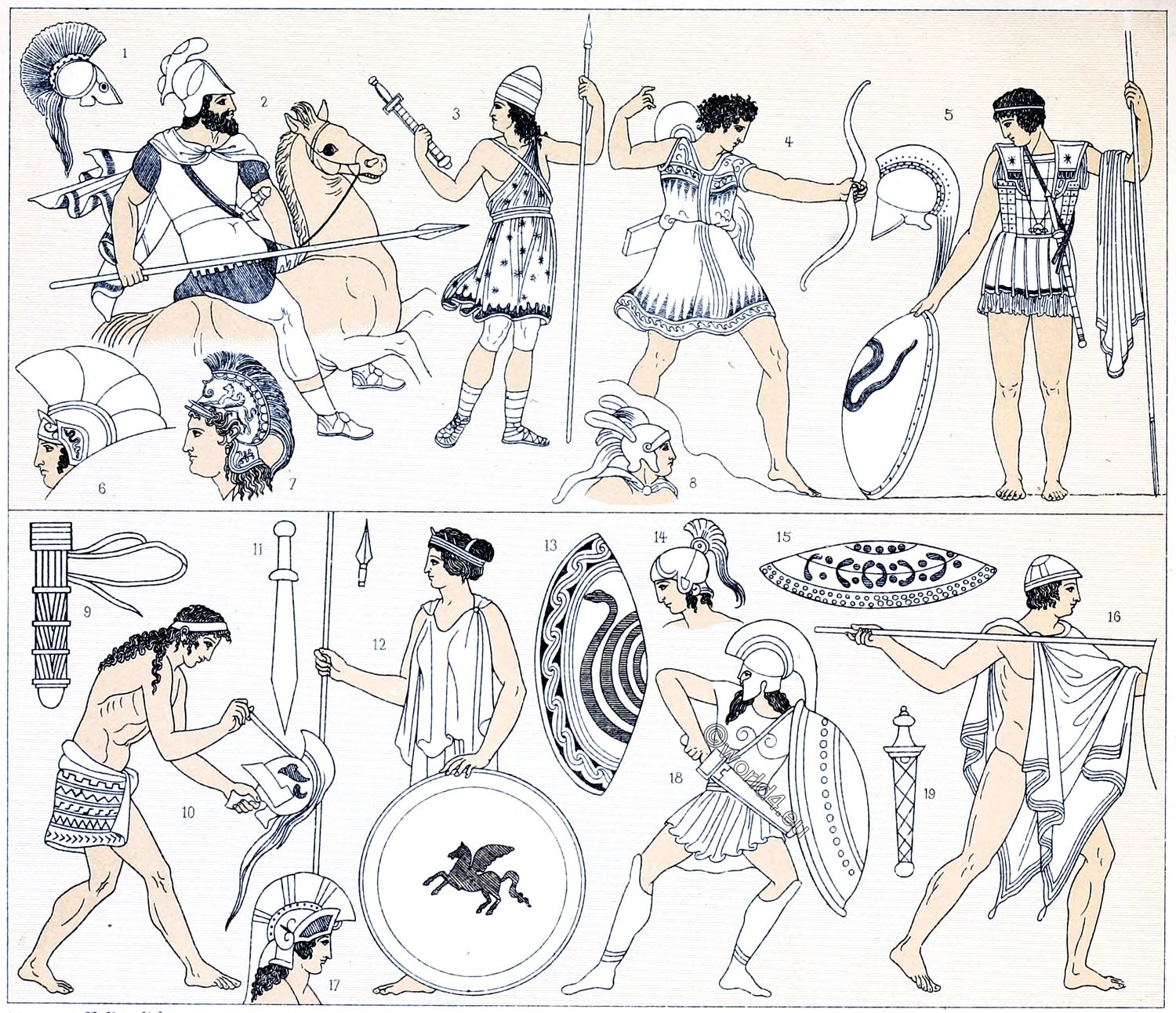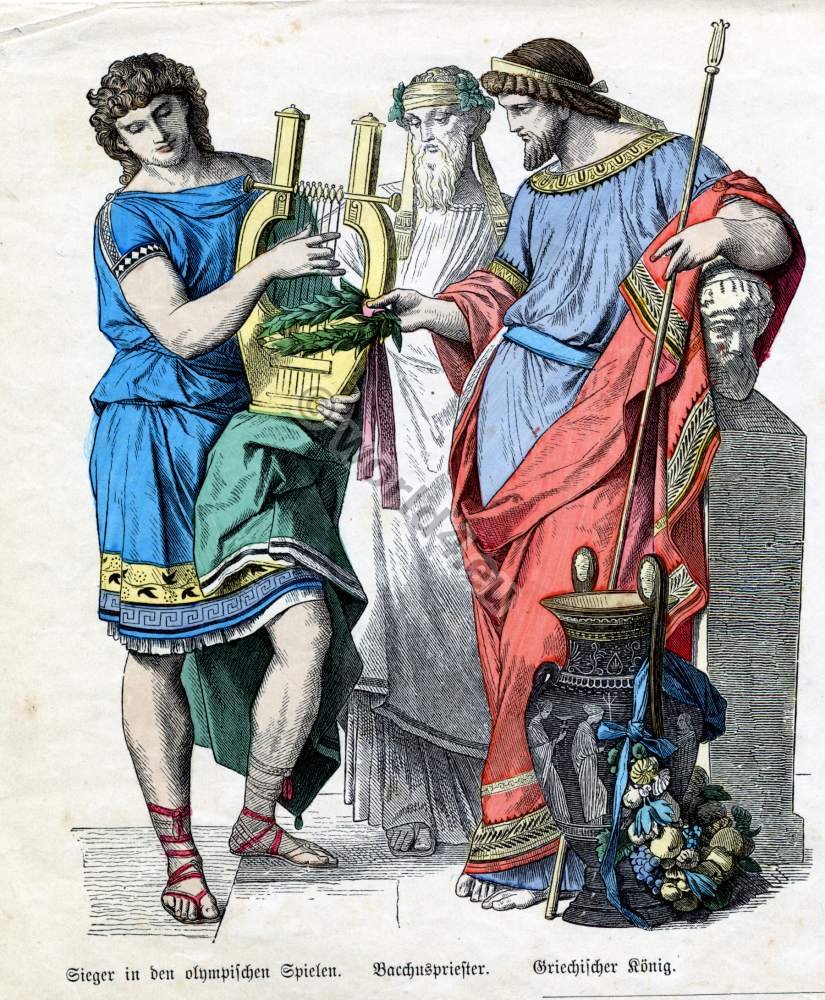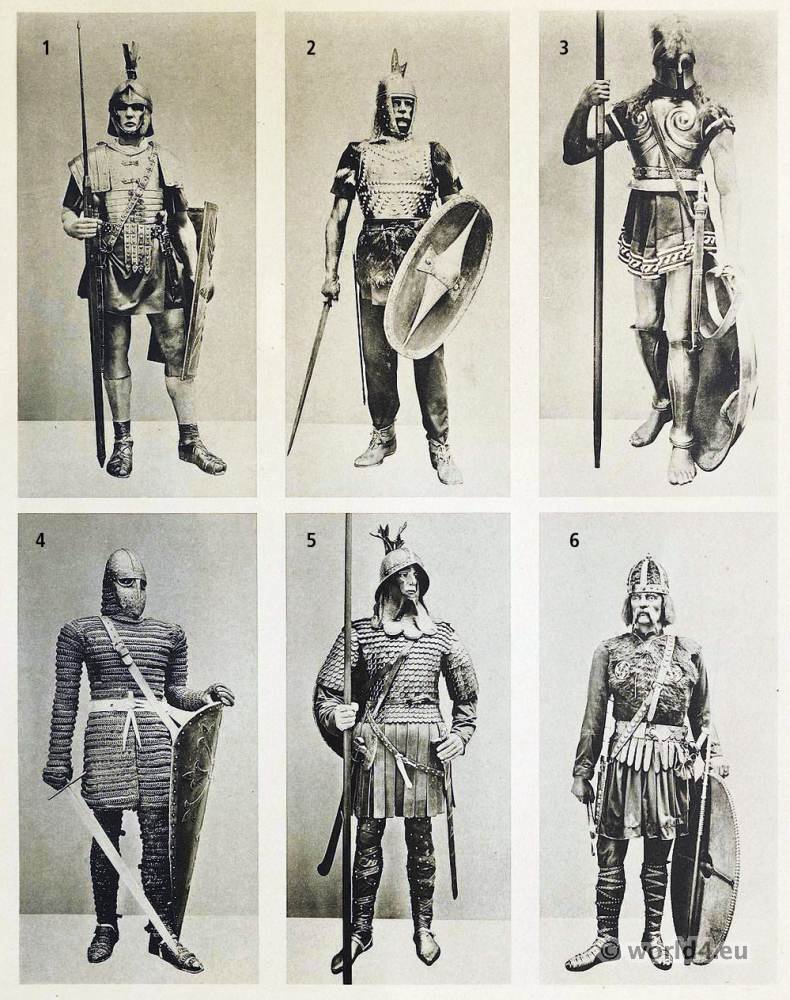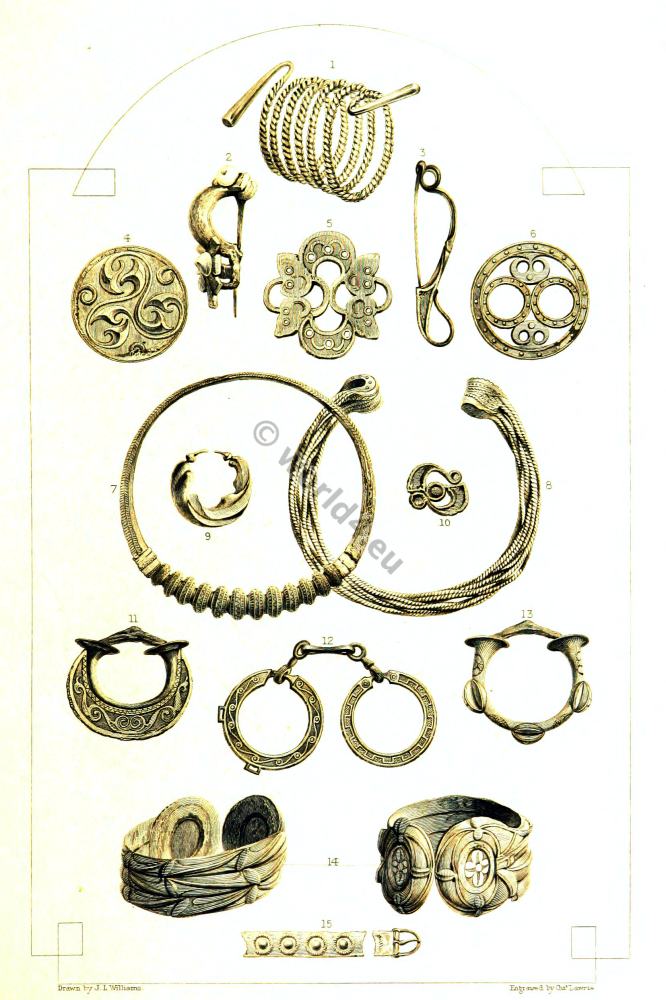
GREEK MILITARY – 1200 BC. – 150 BC.
PLATE Nr. 12
Two warriors in armor of iron, bronze, and leather.
Although we like to remember the Greeks for the beauty of their art, they were a very warlike people. One of their greatest weaknesses was the fact that they were divided against themselves, much is our present-day Christian nations are. Finally they destroyed themselves because they could not see the folly of wasting their energy in fighting among themselves.
If we observe closely the other Greek plates that have been printed, we can see that there were some rather distinct changes in the form of the clothes. This does not seem to have been the case with the development of armor. Once the early form had been established, it tended to remain the same, with only minor changes occurring from time to time.
The two warriors in the picture are wearing or carrying most of the types of war material used by the Greeks for over a thousand years. Neither figure must be considered as early or late, but just as models for the display of the various pieces.
Greek armor was made of iron, bronze, and leather. Practically everything the warriors are wearing is made from one of these, with the exception of the chitons protruding at the waist. Probably the most interesting objects in the picture are the helmets. When worn by the officers they were as a rule very colorful. The high crests were of horsehair, and often varied greatly in length and color. The helmet itself was most usually of bronze, although it is possible that leather was used in the earlier days of Greece. When such was the case, the strange leather mask also appears, but does not remain in use long after the Homeric period.
The most important piece of the ensemble was the cuirass or breastplate. Both figures are wearing it. The kneeling soldier has one entirely of leather with a skirt of leather flaps to protect his thighs. Over the shoulders are metal-covered strips that probably served to shield openings at the collar bones. Getting in and out of these rather tight breastplates was done by having them open at one side and secured by means of lacing. This can be clearly seen on the standing figure. In this case the cuirass is also of leather but covered with metal scales, which were by no means common, since the finest pieces were usually entirely of metal.
Naturally, marching and fighting in a hot climate were not comfortable in armor, so it certainly was necessary to have cloth between the breastplate and the skin. This they accomplished, as we can see, by wearing the cuirass over a simple short chiton or dress.
The weapons were also of the same material. The short sword could be either of iron or of bronze and the shields either of these metals or of leather. The one in the picture is an early example and is of leather. The standing soldier is wearing lower leg or shin protectors. These were called greaves and were usually of painted leather. Notice that the same soldier is barefooted. The Greeks sometimes went into battle without shoes, but the boot seen on the kneeling figure is usual.
Source: Museum Extension Project. History of Costume.
[wpucv_list id=”136457″ title=”Classic grid with thumbs 2″]Discover more from World4 Costume Culture History
Subscribe to get the latest posts sent to your email.

